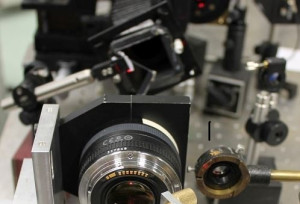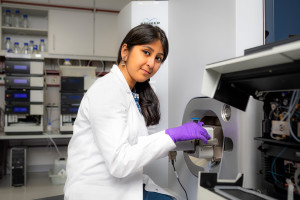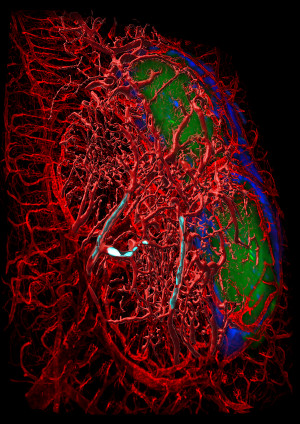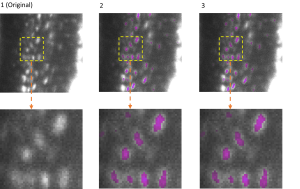Dortmund, 4th May 2020
While viruses are too small to be made visible visually, what they do can be made visible. The Leibniz Institute for Analytical Sciences (ISAS) and the Collaborative Research Centre (SFB) 876 of the Technical University (TU) Dortmund would like to apply a measurement method to the novel corona virus Sars-Cov-2.
The cooperation between ISAS and TU Dortmund University, which has been in place since 2010, could result in an effective method for the containment of the novel coronavirus. With the PAMONO virus sensor, Dortmund physicists, computer scientists and mathematicians have developed an instrument with which analysis procedures can be carried out in real time and on site. PAMONO can also be used outside special laboratories to determine the infection status of large groups, for example airport passengers or residents of entire housing estates. It takes only a few minutes from sampling - saliva, blood or wastewater can be measured - to the test result. This measurement procedure can prevent the introduction, further spread and recurrence of viruses.

The PAMONO virus sensor can make visible what viruses do.
The use of the PAMONO sensor is now also conceivable in the fight against the novel corona virus. To this end, scientists at ISAS and TU Dortmund University are currently working with anti-SARS-CoV-2 antibodies to prepare the PAMONO Sensor for the corona viruses.
This is because the PAMONO sensor works by exploiting a physical effect that bridges the gap between the micrometer and nanometer range: viruses - including corona viruses - are objects on the nanometer range and are therefore too small to be detected with optical microscopes, which can only access the micrometer range. Microscopes lack the necessary magnifying power for the direct detection of viruses. The PAMONO sensor, on the other hand, detects viruses indirectly by measuring changes in the so-called surface plasmon resonance that the viruses cause on the sensor. In principle, this is based on the detection of label-free biomolecular binding reactions on a gold surface, in a series of images taken with a CCD camera. Although the cause of a virus is only nanometres in size, the resonance as an effect extends over the micrometre range. These characteristic changes are determined by image and signal analysis methods based on special neural networks and allow the identification of different viral pathogens with high detection rates in real time.
"This makes viruses optically detectable, which makes a low-cost, mobile sensor and very fast tests possible," summarizes Dr. Roland Hergenröder, who heads the project group on the ISAS side. He hopes that with the availability of anti-SARS-CoV-2 antibodies, the PAMONO Sensor will soon be able to be used for the detection of the novel corona virus.
Sensor and analysis methods were developed in a cooperation of physicists, computer scientists and mathematicians of ISAS and the Chairs of Computer Graphics and Embedded Systems of TU Dortmund within the framework of the Collaborative Research Center 876, subproject B2 with the name "Resource-optimized real-time analysis of strongly artifact-laden image sequences for the detection of nanoobjects". This Collaborative Research Center is funded by the German Research Foundation with a total of 25 million Euros. Prof. Dr. Katharina Morik, founder and head of the Department of Artificial Intelligence at the Faculty of Computer Science at TU Dortmund University, successfully applied for Collaborative Research Centre 876 in 2011. "We are proud of the PAMONO sensor anyway; if it can now be used against corona, that's wonderful," Morik summarizes.





